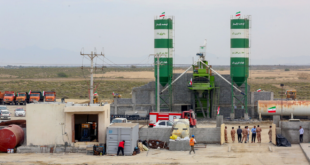The US could very well be past the worst of its inflation problem. But don’t expect things to get cheaper.
For much of the past two years, the pace of price increases has been accelerating. Headline inflation now sits at an 8.6% year-over-year pace, marking the fastest rate since 1981.
Yet recent data suggests that surge could be turning over. Core inflation, which strips out volatile food and energy prices, has decelerated for three straight months, according to the Personal Consumption Expenditures price index. Month-over-month price growth is also down from the levels seen early in the year.
But even though inflation looks like it might be cooling off, don’t expect things to get much cheaper.
To understand the path of inflation, one has to wrap their head around a key distinction. Inflation tracks the pace at which prices grow, not actual price levels. The cooldown seen over the past few months means that prices are still climbing, just at a slower pace.
The current decline is a perfect example of disinflation. The term describes inflation that’s still positive but weaker than before, and it’s exactly what the Federal Reserve and the Biden administration want to see.
Contrary to what many Americans probably believe, some inflation is good. It symbolizes a healthy amount of consumer demand and, more broadly, sustainable economic growth. The Fed has long targeted a one-year inflation rate of about 2%. That level is, according to the central bank, the best for balancing maximum employment and price stability. Allowing for higher inflation would conflict with the Fed’s price-stability goal, and a lower target would likely foster a less inclusive labor market.
Many Americans likely want to see prices drop for some time after the past year’s price surge. Yet a prolonged period of falling prices would make for an entirely different crisis. Such a trend, also known as deflation, can kickstart a vicious cycle for the entire economy.
Businesses tend to slow production when prices fall in order to protect their margins. That usually leads to layoffs and weaker pay growth. If the trend lasts long enough, widespread joblessness can lower demand and pull prices lower still. Deflation is a surefire sign of a weak economy and can quickly pull a country into a downturn similar to the Great Depression.
For now, it looks like the economy is experiencing disinflation, not deflation. Some prices have fallen in recent weeks, but a brief decline among a limited set of goods and services isn’t enough to sound the deflation alarms.
Here are three reasons why that trend of disinflation is likely to continue for the rest of 2022.
(1) The biggest inflation drivers are weakening
Much of the latest inflation surge comes down to commodity prices, specifically food and energy commodities. Russia’s invasion of Ukraine and resulting sanctions on the Kremlin slammed the global supply of several key goods including crude oil, wheat, natural gas, fertilizer, and nickel. That drove prices sharply higher throughout the first months of 2022 and exacerbated inflation that was already running at multi-decade highs.
That trend has reversed course in recent weeks. The S&P GSCI — a popular benchmark for global commodity prices — is down nearly 23% from the record high posted in early June. Crude oil futures have similarly plunged, and prices for food commodities like wheat, corn, and soybeans are also off of their early summer highs.
The declines are already offering Americans some relief. The average price of a gallon of gasoline slid to $4.78 on Wednesday, according to AAA, down from the mid-June record of just over $5. About 80% of gas stations are back to selling regular-grade fuel for less than $5 a gallon, Andrew Gross, a AAA spokesperson, said in a Tuesday release.
(2) Supply chains are healing
The supply chain snags that emerged in 2021 played a major role in pushing inflation to historic highs. Solving the tangle of port backlogs and shipping delays could cool price growth, and some indicators signal the situation is improving.
For one, shipping rates are almost half of what they were at the height of the logistics mess in the fall. The Freightos Baltic Index, which calculates the average price of shipping a 40-foot container of goods, fell to $6,577 in the week that ended July 1. That’s down from $11,109 in September, and the decline has accelerated in recent months. The downtrend suggests kinks in the supply chain are being worked out, and as shipping costs fall, there will be less pressure on companies to boost prices.
(3) Companies are moving from price hikes to discounts
Easing inflationary pressures are an encouraging sign, but it takes time for that to translate to slower price growth at gas stations, grocery stores, and retailers. Commentary from several companies hints that shift is taking place right now.
In a first-quarter earnings call on June 29, Bed Bath & Beyond CFO Gustavo Arnal indicated the company will “work aggressively” to clear excess inventory that the company has built up, according to a transcript created by Sentieo. The clearance will all but certainly come with many price cuts as the company looks to trim its stock.
Bed Bath & Beyond is far from the only company pivoting from inventory build-up to huge sales. Walmart executive John Furner told investors in June that it could take “maybe a couple of quarters” to clear out unwanted inventory. Macy’s CEO Jeff Gennette told The Wall Street Journal in late May that inventory boomed faster than expected, and that markdowns will weigh on profits as the department store chain clears some supply.
That’s poised to skew the supply-demand imbalance in consumers’ favor. After a year of soaring prices, Americans are likely to enjoy a summer of deals.
 Eurasia Press & News
Eurasia Press & News




